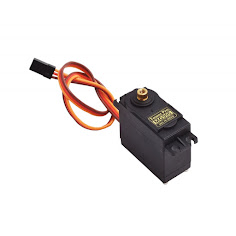Factors to be considered while selection and sizing of a hub motor for electric bike.
The
size of the hub motor and battery suitable for a CG 125 motorcycle conversion
to electric power depends on several factors, including your specific
performance requirements, budget, and intended use. Here are some general
guidelines to help you determine what might be suitable:
1. Motor Size.
·
Power Rating: A typical CG 125
motorcycle engine has a power output of around 8-11 horsepower (HP). To
maintain similar performance, you'd want an electric motor with a power rating
in this range or slightly higher to compensate for any losses in the conversion
process.
·
Voltage: The voltage of the motor
should be compatible with the voltage of your battery pack. Common voltages for
electric motorcycles range from 48V to 96V or more, depending on the desired performance.
·
Type: Hub motors are a common choice
for electric motorcycle conversions due to their simplicity and ease of
installation. You can choose a single hub motor for the rear wheel or a
dual-motor setup for increased power and traction.
3.
Battery
Size:
·
Capacity (Ah): The battery capacity
determines how far you can ride on a single charge. A larger capacity will
provide more range. Consider a battery capacity that matches your daily
commuting needs or desired range.
·
Voltage: Ensure that the battery
voltage is compatible with the motor's voltage. For example, if you choose a
72V motor, you should use a 72V battery pack.
·
Chemistry: Lithium-ion batteries are
the most common choice due to their energy density and longevity. They are
available in various chemistries, such as LiFePO4 and Li-ion NMC, with
different trade-offs between energy density, weight, and cost.
·
Configuration: Battery packs can be
configured in series (increasing voltage) or parallel (increasing capacity).
The configuration will depend on your voltage and capacity requirements.
4.
Controller:
·
Choose an appropriate motor
controller that matches the motor and battery specifications. The controller
controls the motor's speed and power output.
5.
Charging
Infrastructure:
·
Consider the charging infrastructure
available to you. Make sure you have access to chargers compatible with your
battery pack's voltage and charging speed.
6.
Weight
Distribution:
·
Keep in mind that electric
components (motor and battery) are usually heavier than a traditional internal
combustion engine. Ensure that the weight distribution is balanced to maintain
good handling and stability.
7.
Regulations
and Licensing:
·
Be aware of local regulations
regarding electric motorcycle conversions. Some regions may have specific
requirements or limitations on power and speed for electric motorcycles.
8.
Budget:
·
Your budget will play a significant
role in determining the components you can afford. Quality components can be
expensive, so plan accordingly.
It's essential to do thorough research, possibly consult
with experts or electric motorcycle conversion specialists, and consider your
specific needs and preferences when selecting the motor and battery size for
your CG 125 electric conversion project. Additionally, ensure that safety
measures, such as proper cooling and thermal management for the motor and
battery, are in place to avoid overheating and ensure longevity.


Comments
Post a Comment